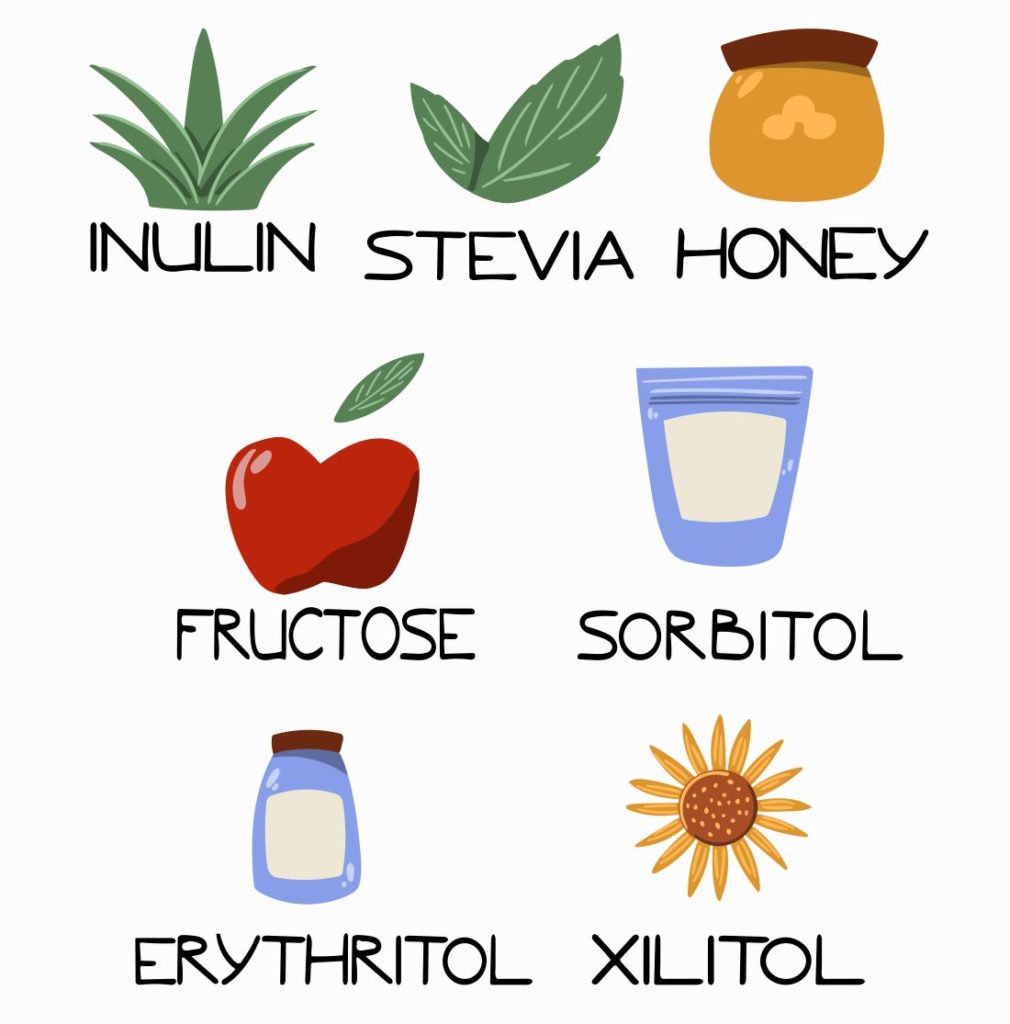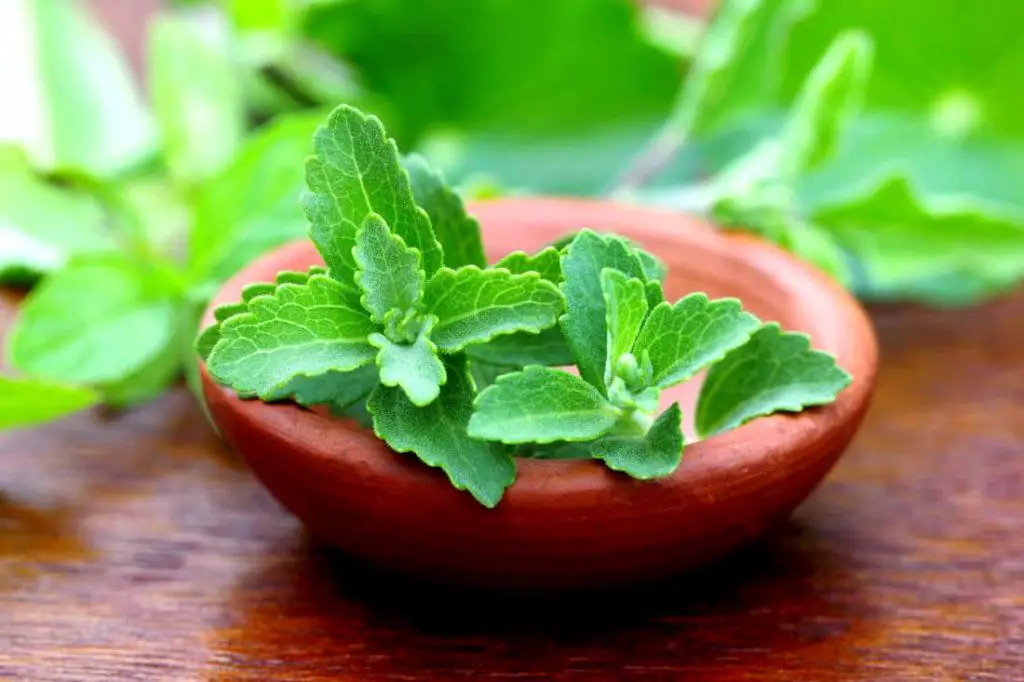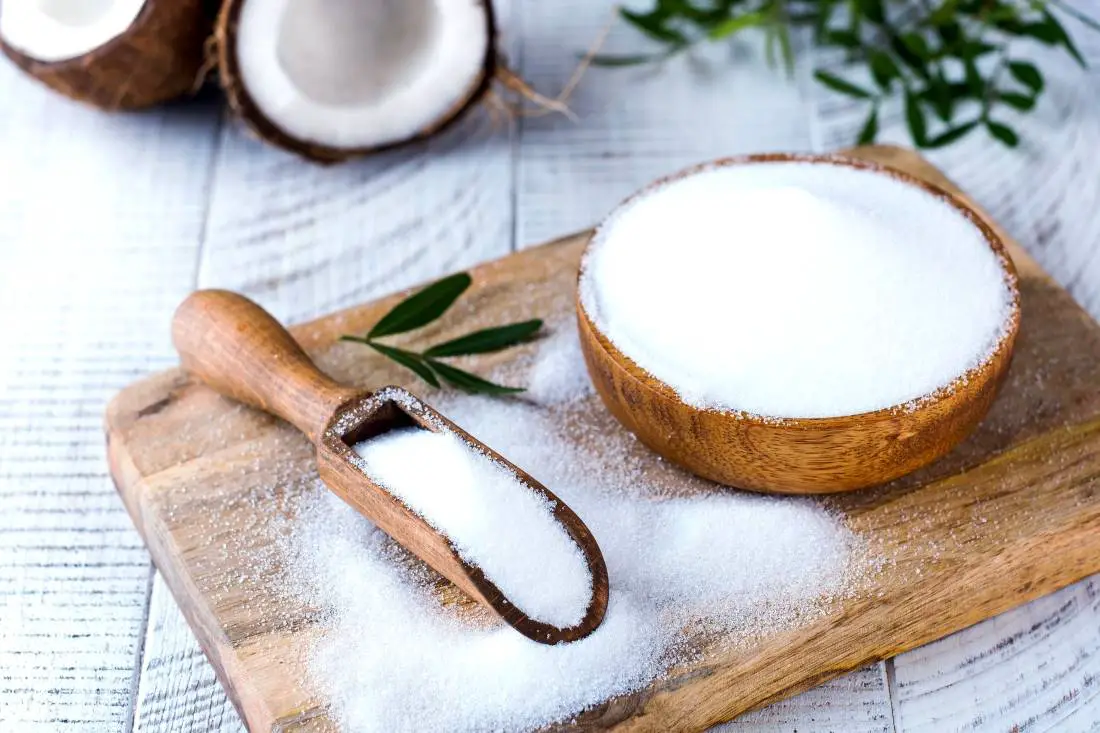Is Stevia high histamine? If you’re looking for an alternative to sugar to sweeten your tea or coffee, you might consider Stevia as an alternative. Stevia is popular as a calorie-free sweetener since it’s not an artificial sweetener and it doesn’t cause blood sugar spikes like sugar can.
If you have histamine intolerance, you might wonder whether using Stevia could trigger histamine intolerance symptoms. Here’s the good news. Stevia is not high in histamine, but there can be some variations from one brand to another.
For example, some commercial Stevia products contain fillers and may be combined with other sweeteners. So, Stevia products can vary quite a bit, depending on how they’re processed and what additives they contain.
Impact of Histamine on the Body
Histamine is a multifaceted neurotransmitter derived from the amino acid histidine. Stored in immune cells, histamine plays a key role in immune responses, digestion, sleep cycles, and cognition. Its release triggers inflammatory reactions to protect your body from pathogens and injury.
Problems arise when histamine accumulates faster than the body can eliminate it. This histamine intolerance causes widespread symptoms like headaches, hives, and digestive issues. The underdiagnosed condition likely stems from genetic factors or intestinal problems that impair histamine breakdown.
Managing intolerance involves avoiding histamine-rich foods, especially aged items like certain cheeses. Other approaches may include safe probiotics to support gut bacteria that help process histamine. Antihistamines may also temporarily alleviate symptoms.
Bringing histamine back into balance helps quiet overactive inflammatory and immune responses. Though complex in effects, keeping this chemical communicator in check benefits systemic health and wellbeing.
Now, let’s look more closely at Stevia and whether it can aggravate histamien intolerance symptoms.
What is Stevia?
Stevia leaf extract is a sweetener derived from the leaves of a plant native to South America. (1) It’s been around for hundreds of years and is popular in Brazil and Japan as a sweetener. To make Stevia, manufacturers grind the leaves into a fine powder. It’s available as pure stevioside (the active compound) or blended with fillers such as maltodextrin or dextrose.
Depending on the source you refer to, Stevia is about 200 times as sweet as table sugar. (5) Being this sweet, you don’t need a lot of this sweetener to sweeten your coffee or recipes.
Rebaudioside A (or Reb A), the sweetest form of Stevia, is considered GRAS, or “generally recognized as safe.” (3) However, only purified Stevia glycosides have GRAS designation. Stevia rebaudiana (Rebaudioside A) is also the form your find in most products in the United States.
Stevia Sweeteners May Contain Other Ingredients
The FDA has approved a variety of sweeteners made from stevia leaf extracts, including Truvia and Pure Via. Some manufacturers sell “natural” stevia products that contain no added ingredients while others combine Stevia with other types of sweeteners, including sugar and sugar alcohols.
In its natural state, it can have a bitter aftertaste since it stimulates sweet receptors on your tongue but may also affect receptors that detect bitterness. Combining it with other sweeteners reduces the bitterness.
Since your body doesn’t metabolize purified Stevia extract, so it is calorie-free. (1) Stevia is a popular sweetener for diabetics since it doesn’t cause a significant rise in blood glucose, lipids, or HgBA1C, a marker of longer-term blood sugar control. (2) It also doesn’t affect blood lipid levels. So, it shouldn’t raise your LDL-cholesterol level or your triglyceride level. (2)
Having zero calories, no carbohydrates, and a glycemic index of zero, Stevia is an attractive sweetener in many respects since it doesn’t raise your blood sugar levels or cause weight gain. Those are positives, but what about its effect on histamine intolerance?

Is Stevia High Histamine?
The leaves of the Stevia plant are not high in histamine. There’s also no evidence that the natural compounds in stevia block diamine oxidase (DAO), a key enzyme that breaks down histamine, or that it contains other biogenic amines that can trigger or worsen histamine intolerance symptoms.
Based on what we know about Stevia and histamine intolerance, there’s no evidence that it increases the body’s histamine burden or worsens histamine intolerance symptoms.
As a physician who’s worked with clients with histamine intolerance, Stevia is their preferred sweetener, as it doesn’t cause a rise in blood sugar and doesn’t cause histamine intolerance symptoms. However, Stevia comes in a variety of forms and you should avoid buying Stevia options that contain additives that could be problematic.
Histamine Release in Response to Stevia Allergy
One concern might be allergic reactions to Stevia, which would stimulate the release of histamine. Since Stevia comes from a plant in the Asteraceae family, a family that includes ragweed and other plants that are common allergens, it raises concerns.
Many plants in the Asteraceae family are known to cause various types of allergic reactions, including respiratory allergies from pollen exposure, contact dermatitis from plant proteins, and food allergies from eating plant products. Asteraceae plants known to cause allergic reactions include ragweed (pollen allergy), chrysanthemum (contact dermatitis), and sunflower seed (food allergy).
Since stevia is related to many plants that are well known to cause allergic reactions, some experts recommend that people with allergies to related plants should not use stevia. Yet, there’s no evidence that Stevia causes allergic reactions even in people with ragweed allergies. (6)
One reason Stevia may not cause allergic reactions even in susceptible people is that it’s so highly purified and processed. (6)
Stevia and Histamines: Histamine Levels in Stevia Products
As mentioned, some formulations of Stevia are a combination of sweeteners. Manufacturers may combine it with sugar (sucrose). Those formulations will have more of an impact on blood glucose than formulations without sugar.
It’s also common for manufacturers to combine Stevia glycosides with sugar alcohols. Sugar alcohols are organic compounds that occur naturally in plants and have a lower glycemic index than sugar and other carbohydrates. This means they cause less of a blood sugar rise than sugar while still providing a sweet taste. Manufacturers use them as sweeteners in food products and they also have functional properties (such as thickening) in foods.
Sugar alcohols cause less of a rise in blood sugar than table sugar but some, like maltitol syrup, can raise your blood sugar. So, they’re not as blood sugar friendly as purified Stevia. Here’s a list of sugar alcohols that may be in Stevia and other foods:
- lactitol
- hydrogenated starch hydrolysates
- isomalt
- erythritol
- mannitol
- sorbitol
- maltitol
- xylitol (Be careful! Toxic to dogs and it only takes a small amount to kill a small dog)

Why Purified Stevia is a Better Choice for Histamine Intolerance
Like Stevia, sugar alcohols are not known to be high in histamine or to trigger histamine intolerance symptoms. However, they can cause digestive upset and symptoms like bloating, cramping, and flatulence if you consume too much. As with most foods, people have varying tolerances to sugar alcohols and how much they can consume without tummy discomfort.
I always encourage people to use purified Stevia without sugar alcohols. Since sugar alcohols can cause digestive upset, you might think Stevia is worsening your histamine intolerance when you’re having digestive upset from the sugar alcohols. The downside to purified Stevia is it may have a slightly bitter aftertaste. Some people find it to be more noticeable than others.
Disclosure: Some links below are affiliate links. This means that at zero cost, I will earn an affiliate commission if you click through the link and finalize a purchase.
Of concern is a study linking erythritol, a common sugar alcohol added to stevia preparations, with a higher risk of blood clots. (7) While some have criticized this study, I would avoid sweeteners that contain erythritol until we know more. Here are some Stevia preparations free of erythritol. (aff)
The Bottom Line:Is Stevia High Histamine?
Is Stevia high histamine? There’s no evidence that Stevia is high in histamine or other biogenic amines. So, it’s appropriate for most people on a low-histamine diet. Because everyone is a bit different and you may have varying degrees of tolerance to sweeteners, like Stevia, try using small amounts at first to see how your body responds.
You can use Stevia in beverages, like coffee or tea, and when cooking or baking. If you make a low-histamine smoothie and need a little sweetener, Stevia is a good choice.
Always read the label on Stevia formulations, so you know if the product includes Stevia alone or if the manufacturer added other sweeteners, like erythritol, or sugar. The advantage of added sweeteners is a better taste but, potentially, a greater blood sugar response to the sweetener and digestive upset from sugar alcohols.
FAQ
Does stevia have side effects?
While generally safe, some individuals may experience gastrointestinal symptoms with large Stevia consumption. It’s recommended to consume Stevia in moderation.
Can stevia trigger histamine intolerance symptoms?
Since it’s not a source of histamine, it shouldn’t trigger worsen histamine intolerance symptoms unless you’re allergic to it.
Is Stevia safe if you have other diabetes?
Since Stevia doesn’t cause a rise in blood sugar, like Stevia, it’s a blood-sugar friendly option if you have diabetes or prediabetes. But check with yoru doctor first.
References:
- Ashwell M. Stevia, Nature’s Zero-Calorie Sustainable Sweetener: A New Player in the Fight Against Obesity. Nutr Today. 2015 May;50(3):129-134. doi: 10.1097/NT.0000000000000094. Epub 2015 May 14. PMID: 27471327; PMCID: PMC4890837. https://journals.lww.com/nutritiontodayonline/Fulltext/2015/05000/Stevia,_Nature_s_Zero_Calorie_Sustainable.7.aspx
- Ajami M, Seyfi M, Abdollah Pouri Hosseini F, Naseri P, Velayati A, Mahmoudnia F, Zahedirad M, Hajifaraji M. Effects of stevia on glycemic and lipid profile of type 2 diabetic patients: A randomized controlled trial. Avicenna J Phytomed. 2020 Mar-Apr;10(2):118-127. PMID: 32257884; PMCID: PMC7103435.
- How Sweet It Is: All About Sugar Substitutes. U.S. Food and Drug Administration. Published 2021. Accessed July 13, 2022. https://www.fda.gov/consumers/consumer-updates/how-sweet-it-all-about-sugar-substitutes
- U.S. Food and Drug Administration. How Sweet It Is: All About Sugar Substitutes Accessed January 4, 2022.
- “Structuring sweetness: What makes Stevia so sweet? The molecular ….” 12 Jun. 2019, https://biology.wustl.edu/news/structuring-sweetness-what-makes-stevia-so-sweet-molecular-madness-makes-herb-200-times-sweeter.
- Urban JD, Carakostas MC, Taylor SL. Steviol glycoside safety: Are highly purified steviol glycoside sweeteners food allergens? Food Chem Toxicol. 2015;75:71-78. doi:10.1016/j.fct.2014.11.011.
- Witkowski, Marco, Ina Nemet, Hassan Alamri, Jennifer Wilcox, Nilaksh Gupta, Nisreen Nimer, Arash Haghikia, et al. 2023. “The Artificial Sweetener Erythritol and Cardiovascular Event Risk.” Nature Medicine 29 (3): 710–18. https://doi.org/10.1038/s41591-023-02223-9.

